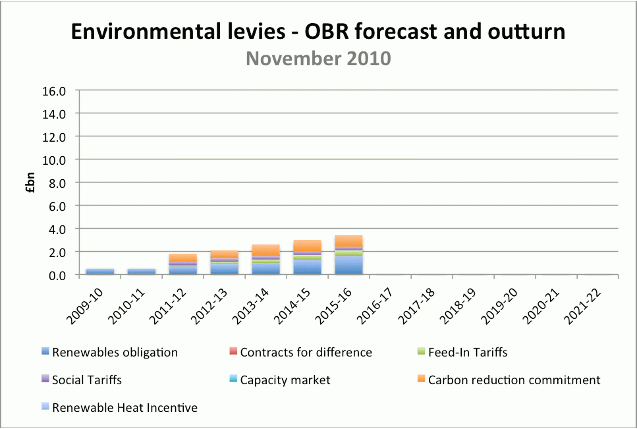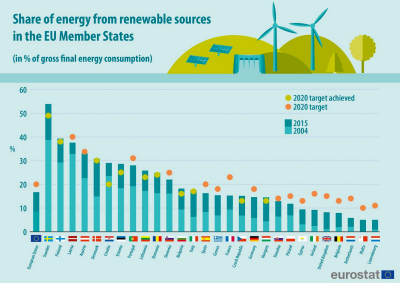
The ever-increasing cost of environmental levies
Friday, 17 March 2017
The costs of the support mechanisms for renewable electricity are rising inexorably. From £0.5bn in 2011/12, the UK's environmental levies are now expected to hit £13.6bn in 2021/22.

£13.6bn p.a. is a lot of money to deliver one of the lowest levels of renewable energy in Europe.
When you are climbing a mountain, what looks like a summit often turns out to be just a brow ahead of yet another incline. The peak is higher and harder to reach than it seems from each vantage point.
So it is with the British government's plans to meet its environmental commitments primarily through the 20% of our final energy consumption that is delivered in the form of electricity.
To mix metaphors, the British public has been like the frog in the slowly-boiling pan of water. Through continuous under-estimates and unheralded increases, environmental levies have reached an anticipated £12.6bn in 2020/21 without provoking a strong public reaction.
And that is just the direct subsidy costs. This does not allow for indirect costs such as the network reinforcement required to incorporate remote, intermittent generation.
Two different things have combined to reach these lofty peaks of taxpayer largesse:
-
The costs rise every year as we add more renewable generation to the network.
-
The anticipated costs in any particular year rise with successive forecasts, as volumes and costs exceed the previously-budgeted quantities.
The animated chart above aims to illustrate both of these factors. (1) is represented by the way that each bar is higher than the one to the left (the previous year). (2) is represented by the growth of each bar over successive OBR forecasts.
The data are taken from the Supplementary Fiscal Tables from each of the Economic & Fiscal Outlooks published by the Office for Budget Responsibility (the most recent of which was published on 8 March 2017).
The OBR do not include the government's efforts towards decarbonising the 40% of our final energy consumption that is used for transport. The Cost Benefit Analysis for the recent consultation to modify the key instrument for this sector, the Renewable Transport Fuel Obligation, estimated the cost of the preferred option at £366m in 2020.
The OBR have recently started including the cost of the Renewable Heat Incentive, the key instrument in the heat sector, which also accounts for around 40% of our final energy consumption. It appears at the top of the later-year bars for the most recent forecasts. They are projecting £1.1bn in 2020/21.
This should give an idea of the extent to which the UK's effort is skewed disproportionately to expensive renewable-electricity technologies.
Related blogs




